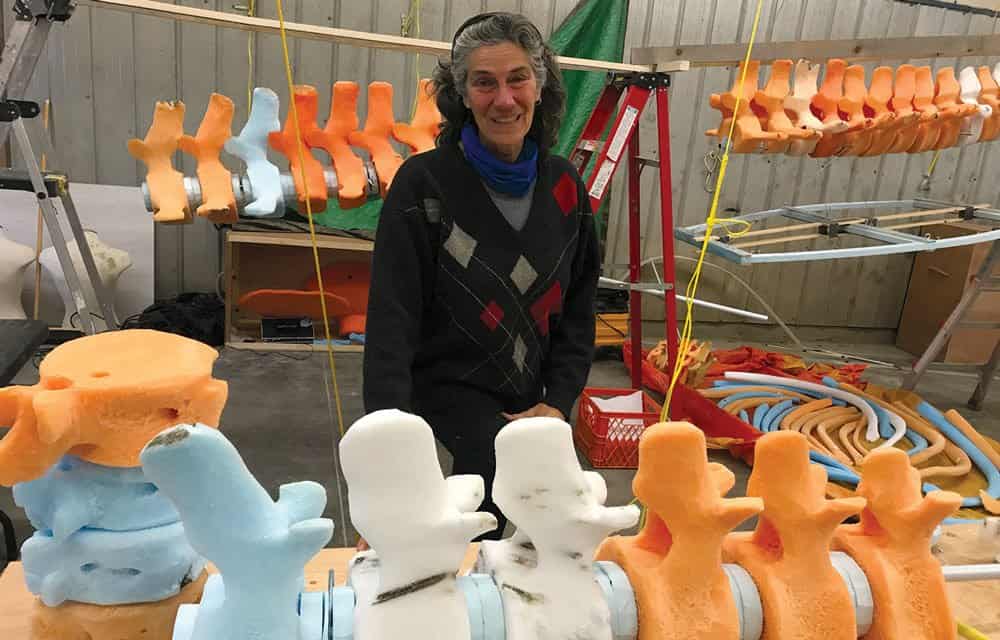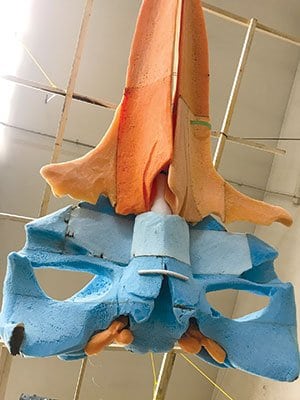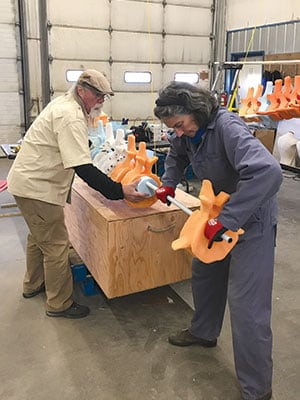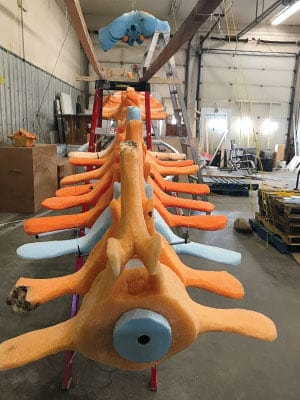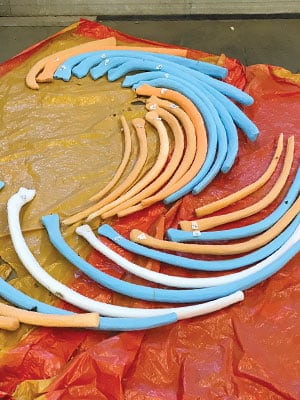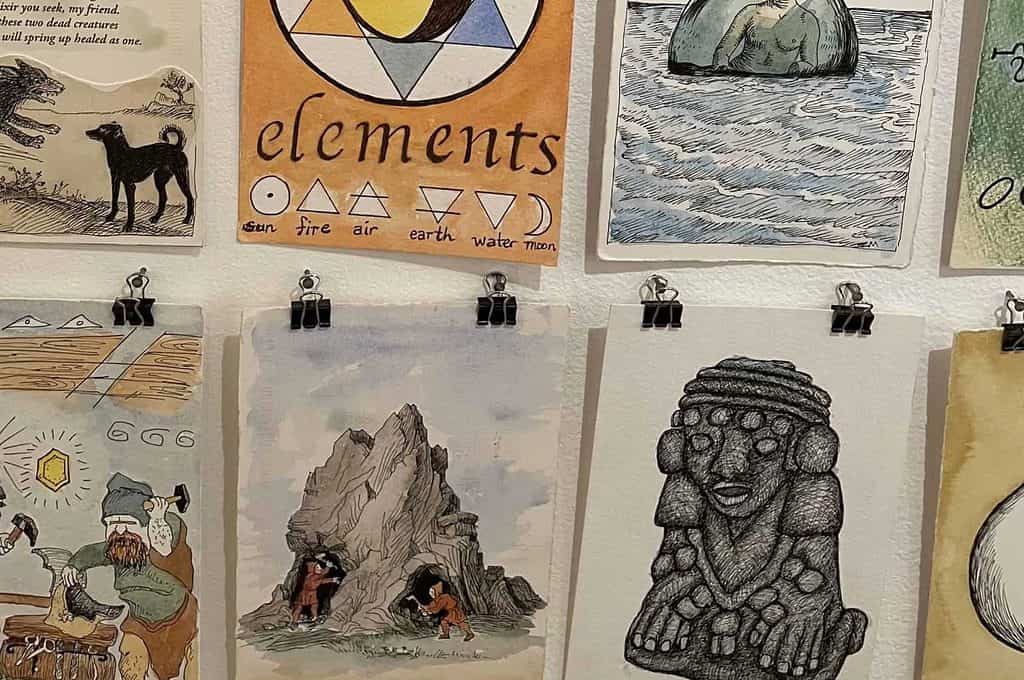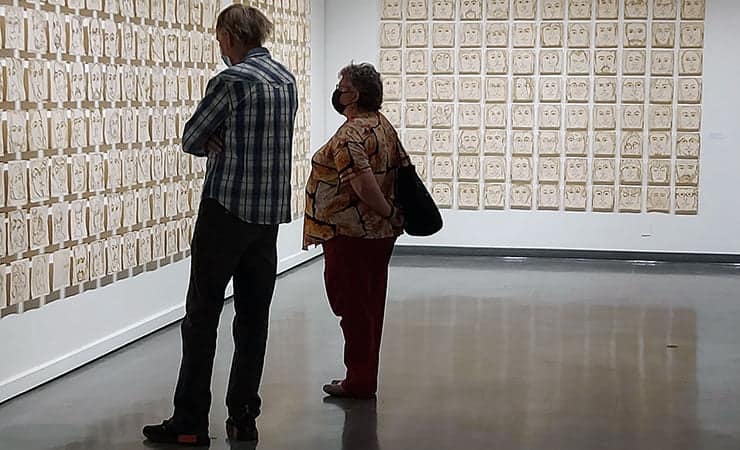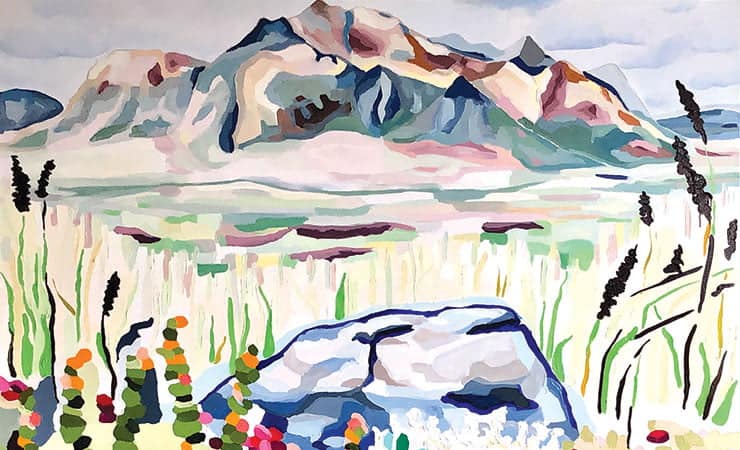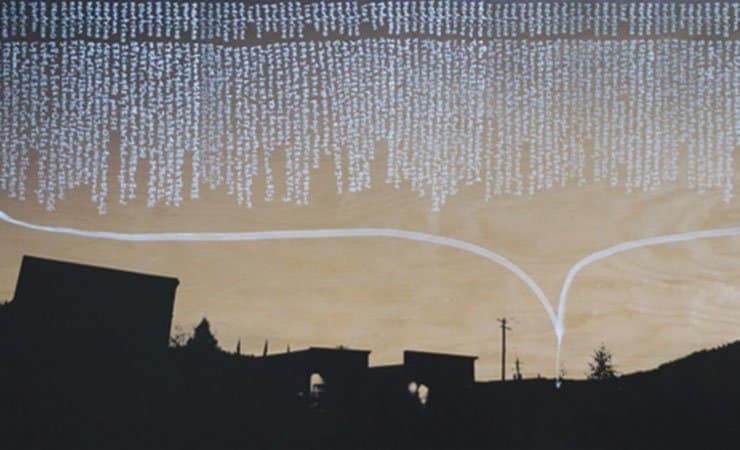Joyce Majiski’s new exhibit explores the ocean and our impacts on it. Now showing at the Yukon Art Centre Gallery until Feb 25, 2021
“I’ve been thinking about water for about five or six years,” said artist Joyce Majiski. “Trying to find a way to convince or coerce water to work with me.” The pursuit of this, in her artistic practice, has taken Majiski to Ireland, Morocco and the coast of Spain. While walking the beach in Spain she was struck by the large amount of garbage that was getting washed in with the tide. She started incorporating some of this garbage she found into the work she was creating. And then, one day, she was struck with a vision of building a whale out of garbage.
“It was a long process to bring this to fruition,” Majiski said. “It took many months to gain access to a whale skeleton that I could use to model my work on. I tried reaching out to everyone I could think of and kept coming up empty. I’m really grateful that the Beaty was willing to work with me on this project.”
The Beaty Biodiversity Museum at the University of British Columbia had a whale skeleton that Majiski could use for the project. The skeleton is from a young female humpback whale that was drowned after her tail was wrapped in herring fishery gear. Her body was found in Telegraph Cove, B.C. The whale’s skeleton was sent to Cetacea, a family-run business located on Salt Spring Island, which specializes in articulating marine mammal skeletons for scientific and artistic collections. Majiski travelled to Salt Spring to work with the bones, staying on the island from September 2019 until June of this year.
Majiski’s vision of creating her version of the whale’s skeleton out of garbage required a large source of styrofoam. The Ocean Legacy Foundation (based in Delta, B.C.) was able to solve that problem for her. The Ocean Legacy Foundation is a Canadian non-profit, which has pioneered a world-leading plastic pollution emergency response program called EPIC. The program’s goal is to give plastic waste an economic value to stimulate the plastic circular economy and provide communities the long-term tools they need to steward their environment by keeping plastic out of the oceans. To date, the foundation has cleaned up 174,675 pounds of plastic pollution from shorelines, a small portion of which the foundation was able to provide to Majiski to carve the bones of her whale.
Over her time on Salt Spring, Majiski would collect a small set of bones from the whale skeleton held at Cetacea and then meticulously recreate them, to scale out, from the salvaged styrofoam, with a hand saw and exacto knife. “There are several different colours of the salvaged styrofoam,” Majiski said. “I quickly learnt (that) meant the different colours had different properties. Each colour would carve differently and would dull blades at a different rate. It kept the carving process dynamic and unpredictable.”
Once the carving was complete, Majiski rented a U-Haul and trailer and drove the full skeleton home to Whitehorse. She then faced the challenge of finding a space large enough to assemble and articulate the skeleton.
“I was striking out on finding a place,” she said. “It turns out that, although during COVID there are empty spaces, many are not available to be used. I was driving by the old Greyhound station one day and thought ‘maybe that would work.’”
Lucky for her, the current tenants (who are working to set up a new grocery store in the space) were very happy to let her use the building. Majiski and fellow artist, Donald Watt, got to work assembling the skeleton. “We’ve been at it six hours a day throughout the week days,” said Majiski. “It’s a lot of thinking time and experimentation. When a real whale skeleton is assembled, it takes a huge team of people and welding metal supports. In this case it’s just Don and me working it out. We can’t weld styrofoam, so we have to work out different systems. I couldn’t accomplish this without Don’s help.”
The final assembled skeleton will be premiered at the Yukon Arts Centre in December. The whale will be accompanied by 1,000 herring created out of plastic bags, projections and a scoundscape created by Daniel Janke.
The whole creation experience has been very personal and profound for Majiski. “I have spent so much time with her bones that I feel like I know and am connected to this whale. As humans we never get to spend this kind of time with an animal.
“I also feel like, in a way, this whale wanted to happen. Every step along the way resolved itself without a lot of push from me. It’s like she wanted to happen.”
